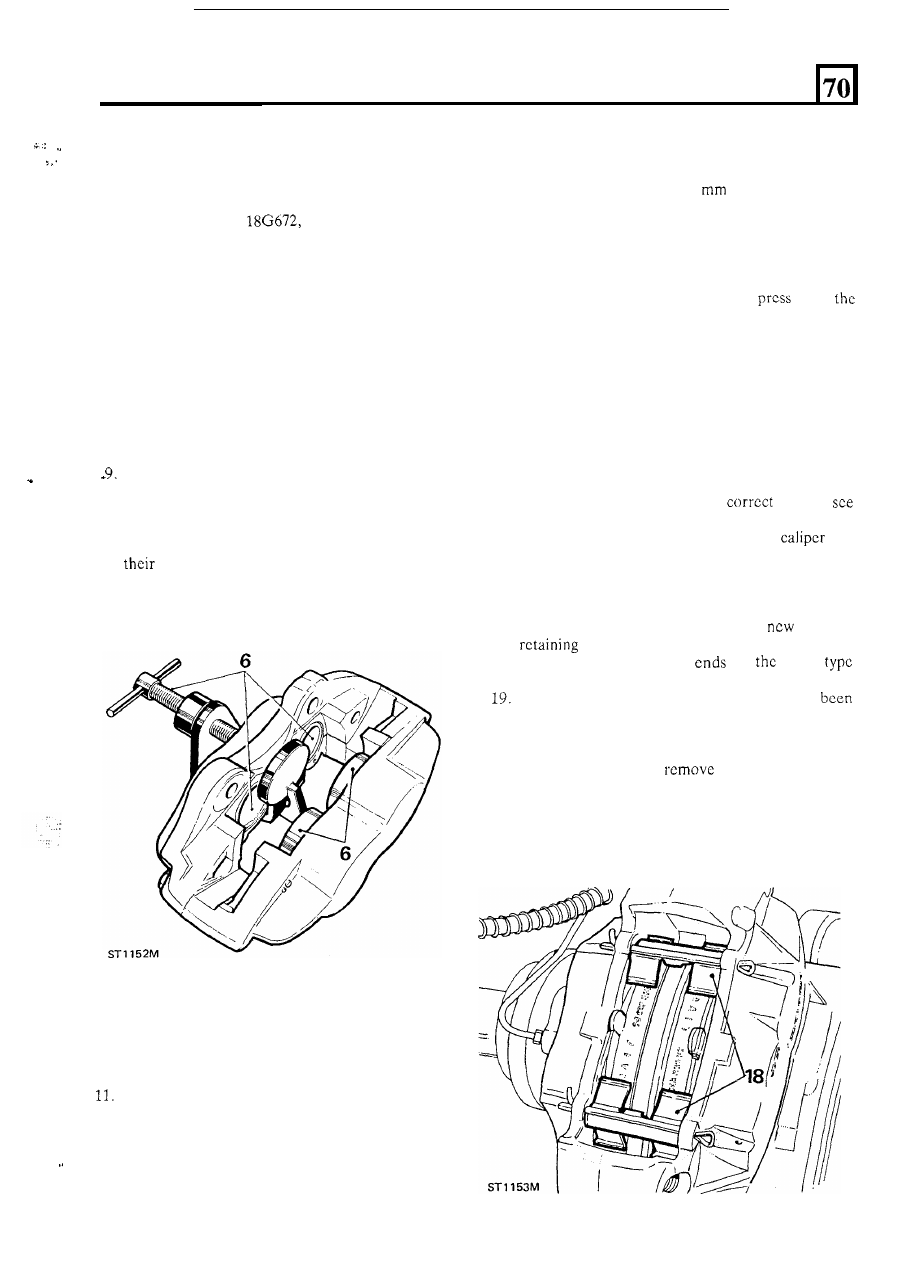Defender 90 / 110 / 130. Manual - part 119

BRA
K
ING SYSTEM
DISMANTLE AND OVERHAUL
Do
not separate the caliper halves.
.
.
5.
Clean the outer surfaces of the caliper with
methylated spirit.
6.
Using special tool
clamp the pistons in the
mounting half
of the caliper and gently, keeping
fingers clear, and with CAUTION, apply air
pressure to the fluid inlet port to expel the rim half
pistons. Since it is unlikely that both pistons will
expel at the same time, regulate the rate with a
suitable piece
of
timber between the appropriate
piston and caliper.
7. Finally, remove the pistons keeping them
identified with their respective bores.
8.
Remove
the wiper seal retainer by inserting a blunt
screw driver between the retainer and the seal and
prise the retainer carefully from the mouth
of
the
bore.
Taking care not to damage the seal grooves, extract
the wiper seal and fluid seal.
10. Clean the bores, pistons and particularly the seal
grooves with clean brake fluid or methylated spirit
only. If the caliper
or pistons are corroded or if
condition is not perfect the parts must be
renewed.
/-
Assemble rim-half pistons
Coat a new fluid seal with Lockheed disc brake
lubricant. Ease the seal into the groove in the bore
using only the fingers and ensure that it is properly
seated. The fluid seal and the groove are not the
same
in section
so that when the seal is seated it
feels proud to the touch at the edge furthest away
from t h e mouth of the bore.
.
12. Smear the appropriate piston with disc brake
lubricant and insert it squarely into the bore by
hand only.
Do
not tilt the piston during insertion
and leave approximately
8
projecting from the
bore.
13. Coat a new wiper seal with disc brake lubricant and
fit
it
to a new seal retainer. Slide the assembly, seal
first, over the protruding piston and into the bore
recess. Remove the piston clamp
from the
mounting half and use t h e clamp to
home
seal retainer and piston.
Mounting-half pistons
14. Clamp the rim-half pistons and carry out the same
procedure as for removing and fitting the rim half
pistons and seals, instructions
6 to
13.
Fit calipers and pads
to
vehicle
15. Fit the caliper to the axle and secure with the two
bolts tightening evenly
to
the
torque,
data.
16. Connect the brake flcxiblc hose to the
and
remove the hose clamp.
17.
Lightly smear the back and edges
of the pads
with
disc brake lubricant carefully avoiding the friction
material.
18. Fit the friction pads and secure using
pins and
clips
or
split pins (latest type) and anti-
rattle springs. Splay the
of
early
retaining pins.
When the foregoing instructions have
completed
on
both calipers, depress the brake
pedal firmly several times to locate the friction
pads.
20. Fit the road wheels,
the axle stands and
finally tighten the road wheel nuts, see data.
21.
Road test the vehicle, remembering that
if new
friction pads have been fitted they are not ‘bedded-
in’ and may take several hundred miles before the
brakes are at maximum efficiency.
5